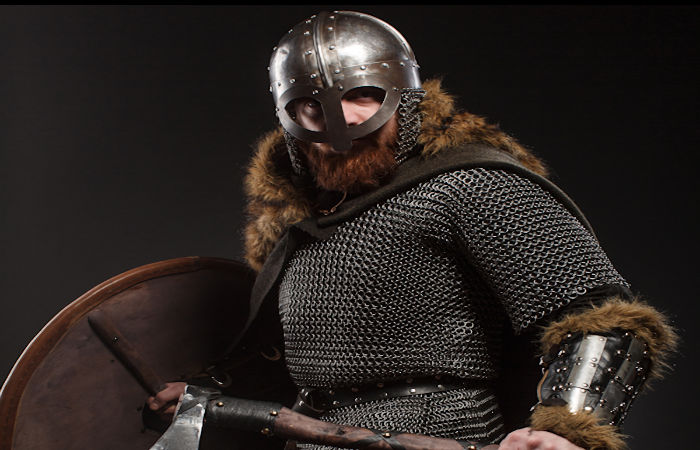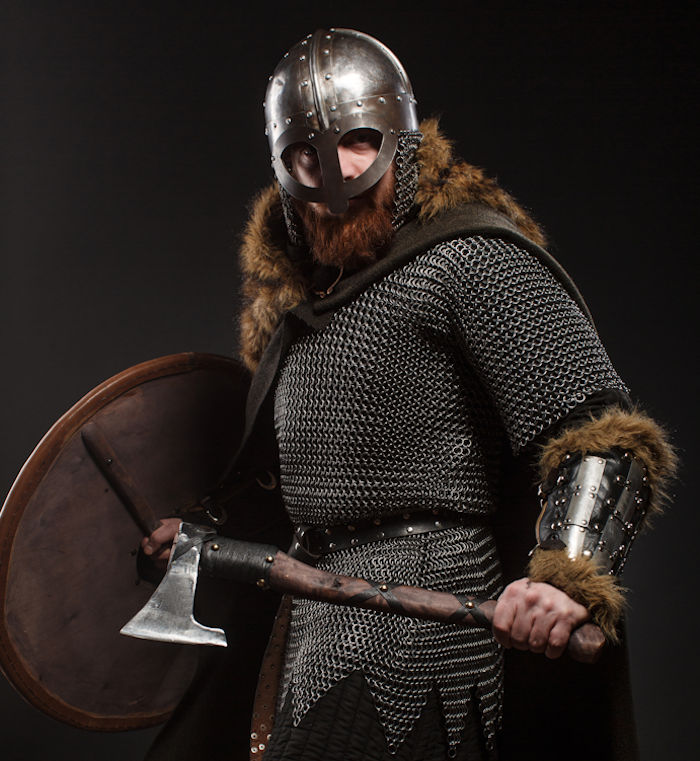Ellen Lloyd - AncientPages.com - An influential Viking chief had many enemies lurking everywhere. To stay in power, he had to be protected. A hird consisted of hired professional warriors who guaranteed their leader's safety day and night.
They were greatly rewarded for their services and lived a life many young men could only envy.
Becoming a Hirdman was an honor. Credit: Adobe Stock - fotokvadrat
Many young Vikings dreamt about an adventurous life, and being chosen to a hird was a great honor. A young Viking had to distinguish himself because Viking chiefs selected the most skilled warriors and only those from influential families.
Being good in battle was no guarantee that a Viking could serve in a hird.
The word hird itself stems from the Anglo-Saxon word hîred, which means a 'family' or 'household.'
Hirdman was a member of a Hird household family. Viking leaders had warriors in service from ancient times.
At the beginning of the Viking Age, a hird was like a war band, but around the time of the early Viking voyages, the term referred to a more unified group of bodyguards who traveled with their leader and protected him. A hird could be made up of 60 Viking warriors. Although any free man could assemble a hird, the truth is that only the most powerful chiefs and kings could afford the luxury of personal bodyguards.
Norse warriors did not fight for free. Their services were costly, and their payment came in gifts such as gold and silver, clothes, and weapons.
Warriors also needed proper accommodation, food, and drink to protect their leader all around the clock.
The leader fought for victory in a battle, and the warriors fought for the leader.
Becoming a member of a hird meant that warriors swore an oath to fight and defend their leader at any time.
They also had to hand over plundered treasures to their leader, who gave them some of the booties. Any member of the hird had to avenge their leader's death if necessary.
Bonds between hirdmen were strong and they saw themselves as a warrior brotherhood. Credit: Adobe Stock - Nejron Photo
Of course, Viking chiefs did more than engage in battles. A hird had to follow their leader to meetings with other chiefs and participate in many journeys. In those days, it was undoubtedly a desirable profession.
Once a Hirdman finished his duty, he was given a bit of land and property from the leader he had served faithfully.
A hird should not be confused with the Varangian Guard, which also consisted of hired professional Viking warriors. As we discussed on Ancient Pages before, However, the Varangian Guard represented the elite heavy infantry regiment of the Roman ('Byzantine') Empire from AD 988 AD to around 1404 AD. the Varangian Guard also employed warriors who successfully conquered territories.
It's also worth mentioning that members of a hird shared a unique and strong bond. They perceived themselves as brothers, just like the fearsome Jomsvikings – a mysterious Scandinavian warrior-brotherhood.
Updated on October 1, 2022
Written by - Ellen Lloyd – AncientPages.com
Copyright © AncientPages.com All rights reserved. This material may not be published, broadcast, rewritten or redistributed in whole or part without the express written permission of AncientPages.com
Expand for referencesReferences:
Anette Tamm - Vikingar: kring hem och härd
Lars Magnar Enoksen - Vikingarnas stridskonst
Hans H Lundqvist - Vikingarnas ursprung







